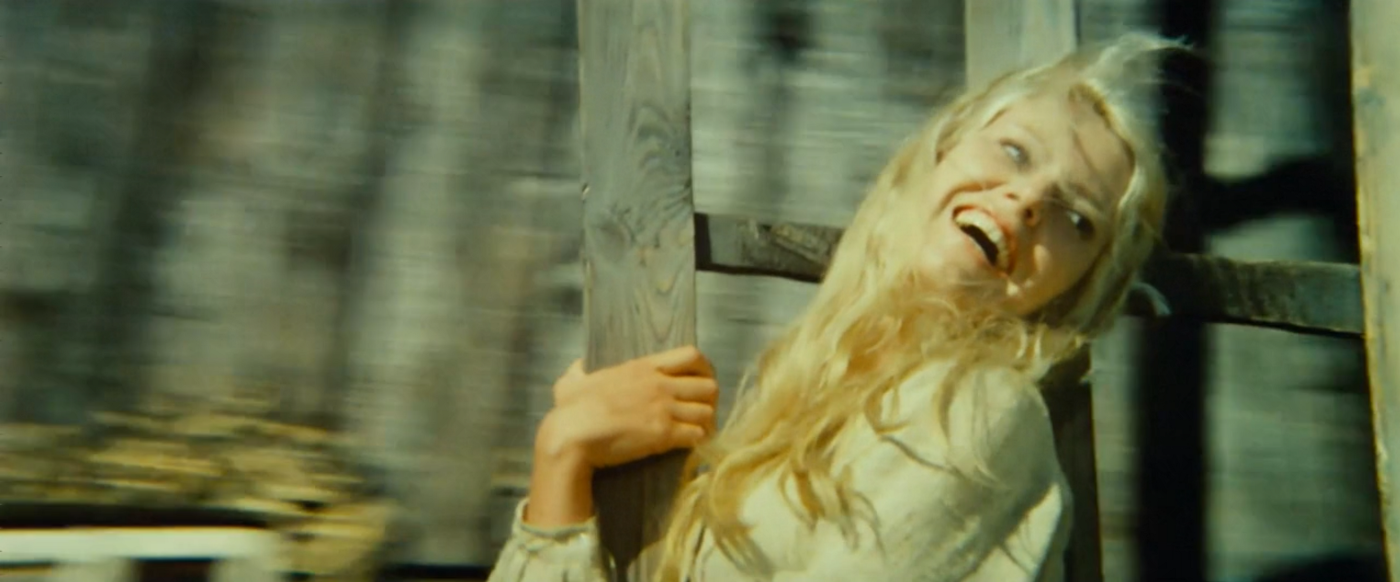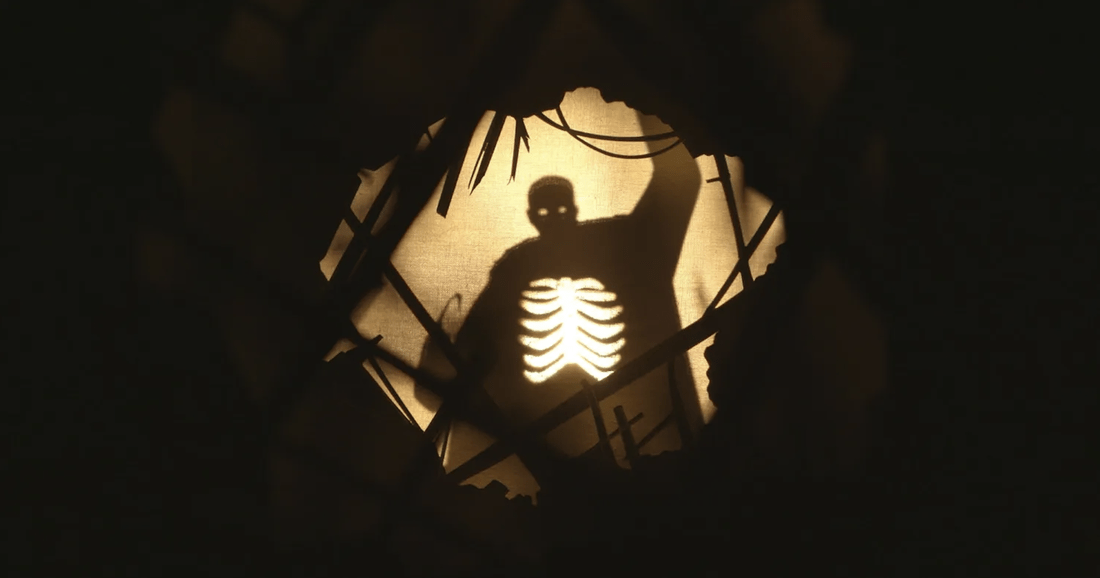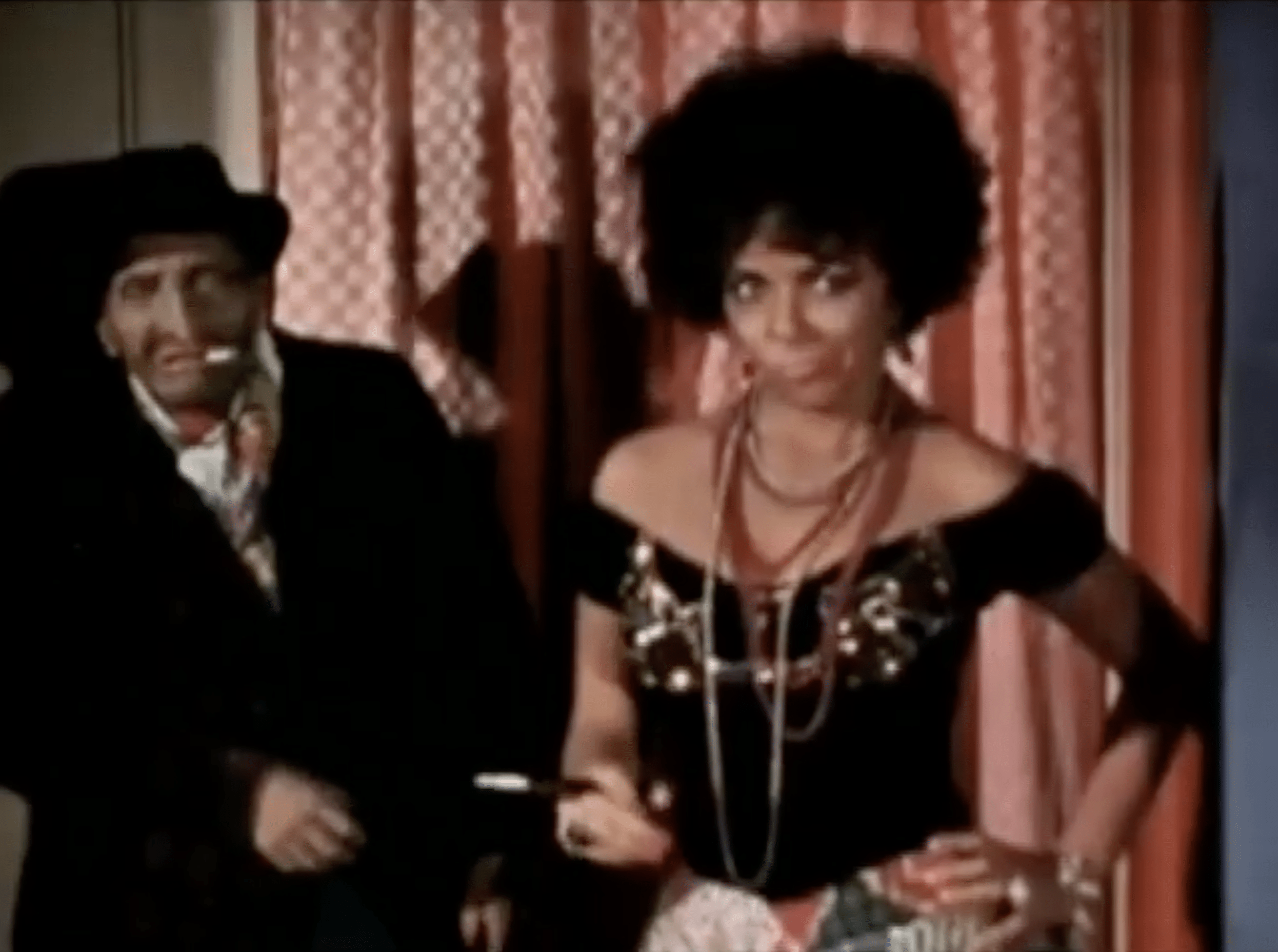
There is no shortage of gorilla suit movies. Whether it is Sasquatch, an alien who happens to look like a gorilla, a monster that happens to look like a gorilla, or a gorilla who happens to look like a man in a gorilla suit, they are all pretty much the same. The wild, hairy beast runs off with a beautiful, young woman who is then rescued by a strapping, young man.
The Bride And The Beast has these same ingredients, but throws in a twist at the end, and a truckload of psycho-sexual drama. It’s one of those films where the subtext is so heavy, you wonder how much was deliberate. It’s a cheap B-movie designed to make a buck, but they had to hire a writer and a director, either of whom may have had the wherewithal to wrangle a few metaphors. Intentional or not, The Bride And The Beast could almost pass as a tortured German Expressionist film from the silent era.
From the first frame to the last, the film is focused on sex. The movie opens with a newly married couple on their honeymoon. They are speeding along a country road, eager to get to their hideaway home in the mountains. The film was made in 1958, so sexual desire can not be shown outright, but a speeding car with a “Just Married” sign on the back gets the message across.
The couple expresses their love for each other and their excitement for what is to come, and then tumble into the husband’s palatial hunting lodge. The man is named Dan, and his pretty, young wife is Laura. Once inside Inside Dan’s house, Laura is greeted by all of Dan’s previous conquests. He is a prodigious safari hunter and his walls are covered by stuffed and mounted beasts.
Dan is our first male archetype. He is virile, but respects and upholds society's morals. He can be a strong, reliable provider who will take control of a situation and do what is right. The 1958 version of marriage material.
Dan takes Laura through a secret door into a torch-lit dungeon where he keeps his pet gorilla in a big iron cage. By passing through the door, we go from polite, if not slightly eccentric society into a dark and dangerous place that lurks just underneath the societal facade.
The gorilla is male archetype number two. Frightening, unpredictable, but thrilling. Laura and the gorilla have an immediate connection, signified by cutting back and forth between close-ups. Laura was already aroused and ready for sex when she arrived at the mansion, and then she is confronted with the animal magnetism of a sexually potent beast. He does not hide his passionate desires and grabs her through the cage. Dan steps in to protect her, but by the time the gorilla lets go, Laura and the gorilla have already made a connection.

This dichotomy is as old as time. The woman must choose between the thrill of the unpredictable, socially unacceptable lover, and the responsible, but predictable husband. Susan Sontag, who is probably the last person you want to turn to for relationship advice, nevertheless put it this way,
“Great writers are either husbands or lovers. Some writers supply the solid virtues of a husband: reliability, intelligibility, generosity, decency. There are other writers in whom one prizes the gifts of a lover, gifts of temperament rather than of moral goodness. Notoriously, women tolerate qualities in a lover—moodiness, selfishness, unreliability, brutality—that they would never countenance in a husband, in return for excitement, an infusion of intense feeling. In the same way, readers put up with unintelligibility, obsessiveness, painful truths, lies, bad grammar—if, in compensation, the writer allows them to savor rare emotions and dangerous sensations. And, as in life, so in art both are necessary, husbands and lovers. It’s a great pity when one is forced to choose between them, but there are more archetypes to come.”
Laura will have to face this choice, but not before interacting with a few more male archetypes. After saying good night to the gorilla, she consummates her marriage vows with Dan, and then settles down to sleep in one of two single beds in the master bedroom. Her husband is a respectable six feet away in his own bed, lest the audience get the right idea. It is a perfect depiction of the irreconcilable position women are placed in by Judeo-Christian values. She is allowed to privately want sex, but then must cover up the evidence of having had it. Just before they engage in their carnal secret, we get the same cross-cut exchange of close-ups that transpired between Laura and the gorilla, but this time it’s between Laura and Dan.

While the couple safely sleeps in their separate beds, Laura appears to have a dream. The gorilla bursts into the room, but instead of screaming, Laura walks over to him and lets him caress her cheek. Eventually, Dan wakes up and shoots the poor gorilla so the happy couple can go back to bed. The husband wins over the lover, or the white man wins over the black man, or civilization wins over the chaos of nature, take your pick.
In the morning, Dan calls Dr. Carl Reiner (not played by Carl Reiner). As Dr. Reiner interviews Laura, it becomes apparent that the events of last night were not a dream, but reality. Reiner examines Laura and hypnotizes her in an effort to understand her “strange” behavior with the gorilla. Reiner is the intellectual male archetype. He understands Laura better than she does and can control her with his super-sized intelligence. He is the rational to her emotional.
Reiner decides to put Laura under hypnosis and have her go through a past life regression. Laura has made a sexual connection with Dan and with the gorilla, and so Reiner is next. Her hypnotic journey produces foggy images of the jungle, punctuated by orgasmic moans and gestures, and when she finally awakens, her first words are, “How was I?”

If the husband represents the loving romantic relationship, and the gorilla is the passionate sexual relationship, the doctor is the dominant-submissive relationship. He maintains control at all times, while Laura reels in a submissive ecstasy.
Reiner suggests that Laura was a gorilla in her past life, but Dan is incredulous. In an effort to convince Dan, Reiner points out “her fixation” with furry things which seems like a euphemism for masturbation. Women’s sexuality has been a subject of confusion and fear throughout not only Western culture, but most cultures. There is almost always a fear associated with a woman’s desires, as if they are dangerous. Women are seen as closer to nature, and therefore less civilized, more chaotic, and in need of subduing.
The gorilla in the cage, the gorilla that attacks her, the gorilla in her dream, and the gorilla in her hypnotic trance can also be seen as representations of Laura as a sexually awakened being. The gorilla could be her sexuality personified; a hungry, furry beast that demands satisfaction.
The story for Bride Of The Beast was partly written by the infamous Ed Wood, who had his own unique relationship with the female gender. Wood’s gender identity and sexual preference will never be fully understood now that he is gone, but he did like to dress in women’s clothing. In his film Glen or Glenda, he explores this preference with anxious ambivalence that keeps the viewer at a distance. Regardless of the specifics, Wood was no stranger to marginalized sexual urges.
The beginning is the most interesting part of Bride Of The Beast. Director Adrian Weiss may have seen it as just exposition for the action-packed second half, but the first half is where the meat is. The second half takes place entirely on safari in Africa. At least half of it is stock footage of wild animals.
The film degenerates into watching Dan march around with his rifle capturing every manner of beast with his trusty servant Taro. Taro is a white actor in blackface who inexplicably wears a turban and speaks in broken English. He is a ridiculous mixture of “ethnic others.” Taro represents the last of the archetypes, in that he is an emasculated servant that Laura is free to dominate. A non-man who stays at her side, like a faithful dog that she can love as a faithful friend.

At the end of the film, Laura allows herself to be abducted by a gorilla. Dan tries to save her, but in an unexpected turn of events, he fails, and the movie ends with Laura living with the gorillas and Dan left summarizing the sordid tale to Dr. Reiner. This breaks a very important facet of the Hollywood formula. You can show a wayward woman, but she must be either tamed, punished, or killed in the end. The audience must be absolved from their indulgence in prurience by witnessing the demise of all that society disapproves of. In Bride Of The Beast, Laura gets what she wanted and our upstanding husband is left bewildered, or perhaps the implication is that Laura got what she deserved and is banished to live a brutal and monstrous life in the jungle.

If you enjoyed this article you might also enjoy - https://filmofileshideout.com/archives/the-beauties-and-the-beast-and-the-geek-or-how-to-abuse-a-gorilla-suit/



